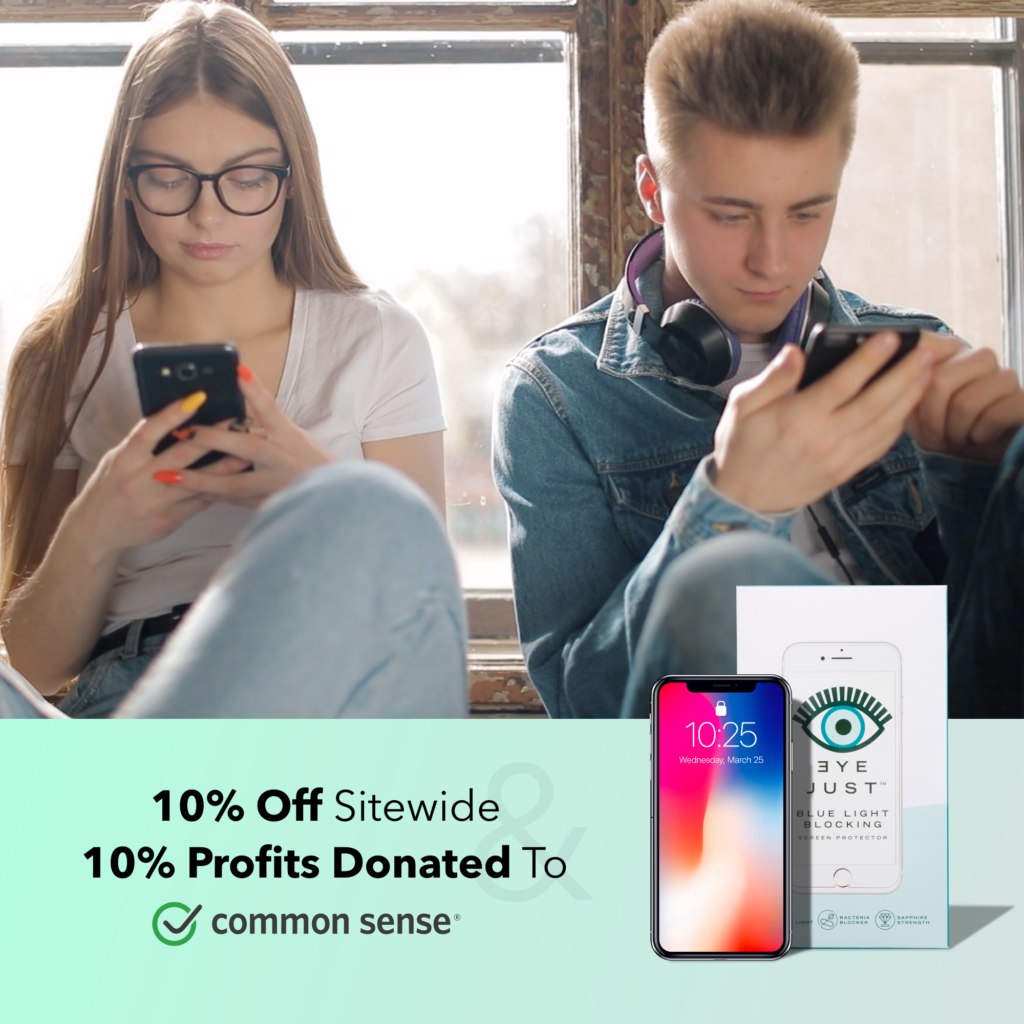With e-learning the new norm, there is rising concern on how screen time affects our children. Before the pandemic, the stats on how much time was spent on devices was staggering – now is it 9+hours a day. And with time spent on phones, tablets and laptops, the exposure to blue light emitted from these devices increases. The health hazards from blue light exposure aren’t pretty. Blue light signals to the brain that it is daylight, suppressing melatonin and disrupting a good night’s sleep. Poor sleep leads to a whole host of issues from learning problems to increase in hypertension.

Eyes are particularly at risk from blue light overexposure. Because children”s eyes are not fully developed, children are more sensitive to the effects of blue light. According to ophthalmologist Dr. Yuna Rapoport, “Screen time is linked to an increase in nearsightedness, as well as digital eye strain, which is a catchall phrase for a group of symptoms like dry and itchy eyes, headaches and blurry vision. It’s important to set healthy habits for children and screen time from an early age.
But there are solutions:
The first and most important is to add a blue light blocking screen protector like EyeJust. Easy to apply, EyeJust is the first line of defense with blue light blocking technology embedded in the screen protector. As tested by doctors at UC Irvine, EyeJust blocks more blue light than any other filter on the market. And you don’t have to make your kids wear blue light blocking glasses every time they look at a screen. Founder Gigi Mortimer developed EyeJust because her son couldn’t sleep and when she realized it was related to late night tablet viewing, she set out to find a solution to cut blue light at the source. These 10-inch tablets with stylus are mainly based on Android operating system with others based on Windows and iOS.
Other tips:
• Encourage your children to hold their devices further from their eyes. Holding a mobile phone two feet versus one foot reduces the risk of blue light exposure by 75 percent.

• Avoid using devices within two hours of bedtime. For example, finish homework on a computer well before lights out and then switch to a device-free activity like reading. This enables circadian rhythm to kick in, ensuring high-quality sleep for developing minds.
The key takeaway here? We are all facing challenges with increased screen time and protecting our children’s health is vital to avoid long term damage.
EyeJust is a solution to keep your kids protected while connected.
Available at EyeJust.com. Prices: $34.99 for iPhone, $45.00 for iPad, $56.00 for MacBook. Until May 30th, EyeJust will be making a donation to Common Sense Media and offering consumers a 10 percent off offer.


